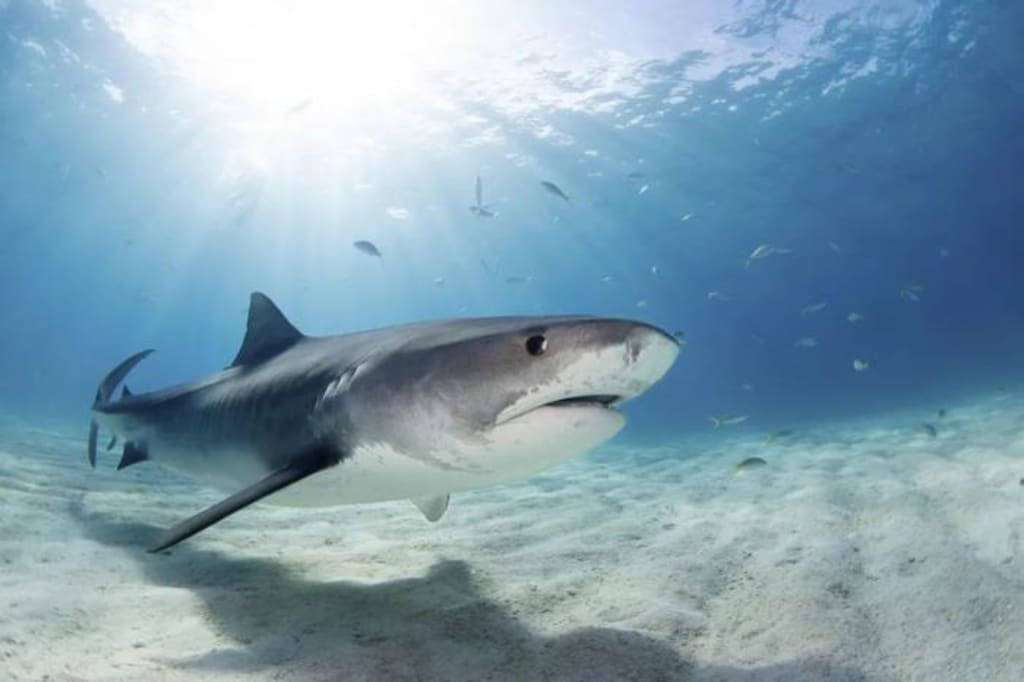The latest cold knowledge: shark navigation cheats, it turns out that the earth's magnetic field is its compass
Shark Navigation Cheats

Now that everyone is going to travel abroad, as long as they have a mobile phone, they will basically not get lost, because now there are navigation maps on mobile phones. Relying on satellite positioning, we can easily and quickly know where we are.
Although there was no satellite navigation in ancient times, with the paper map in hand, and by observing the surrounding topographic features, such as a pagoda on the mountain, such as a big tree by the road, you can still know your approximate location. However, in the desert, everyone was completely confused. Looking around, the surrounding sand dunes were similar. What is more troublesome than the desert is the ocean, and it is even more so without arguing between east, west, north and south, and the vast sea has completely lost its characteristics.
How to do it? It can only rely on the stars in the sky as a reference, which is the so-called "astronomical navigation" technology. Up to now, we still rely on the stars in the sky to navigate, just replaced by artificial satellites. But what about the fish in the water? They live in water and are unlikely to even look up at the stars.
In 2005, scientists discovered that great white sharks can swim from South Africa to Australia. The next year, he swam back to South Africa (where he lived) in a straight line. Of course, there are more sharks with this ability, which is an incredible ability. How do they do it? How do sharks navigate underwater? How does it know it's swimming in the right direction? Visibility in the water is also poor, and it is difficult for sharks to rely on the surrounding scenery to determine their location.
Nor can they come home smelling like a dog, where the smell of the sea spreads and is washed away by the current. Besides, the road is too long, from South Africa to Australia, at least 10,000 kilometers. No matter how sensitive a shark's sense of smell is, it can't do it.
Since the 1970s, scientists have suspected that marine fish such as sharks and rays can detect magnetic fields. That being the case, there's a good chance that sharks use magnetic fields to navigate. However, sharks are not so easy to study. This is not a small fish or shrimp. You can study it with a tank. The shark was big and ferocious, and the small pond could not fit it.
How did scientists know that sharks can sense magnetic fields? Carl Mayer's research team at the University of Hawaii built a large 7-meter-square pond, and then placed an electromagnet under the pond and placed 7 small sharks in it. Before each meal, the electromagnet was energized. The sharks were already hanging out, and when they saw food coming, they all rushed towards the food.
Over time, everyone found that every time the electromagnet was energized, even if no food was put in, the shark would swim to the place where it was put. This suggests that sharks associate changes in the magnetic field with food delivery, a so-called conditioning reflex. Circus training animals rely on this method. It can be seen that sharks can feel the magnetic field.
For a scientific question, of course, we start with conjectures. Since we know that sharks can sense magnetic fields, we will naturally think that sharks may use magnetic fields to navigate. We Chinese are not the first nation to use a compass to navigate. It makes sense in principle, and it sounds fine. However, it's not enough to just sound fine, you need to do experiments to prove it.
Speaking of the point, then, how to reproduce it in the laboratory? Until recently, a paper published in the journal Current Biology revealed the secret. Brian Keller of the University of Florida and his colleagues designed an experiment. They caught 20 narrowhead hammerhead sharks off the coast of Florida. The sharks can migrate hundreds of kilometers and return to the same estuary every year, which means they can navigate precisely to find their home.
Why not use a great white shark? Can't let go. The one that doesn't slip in the middle is also 5 meters long, and the large one is 6 meters 4. How big of a pool does it take to swim? Forget it, let's have a small one.
The narrow-headed hammerhead shark is very small. The adult body size is only about 70 cm, and the juvenile small shark is only more than 30 cm long, which is very suitable for experiments.
They put the sharks in turns into a large blue pool and experimented individually one by one. Electromagnetic coils are installed under the pool, which can be used to simulate the magnetic field at any point on Earth. The direction and strength of the magnetic field varies from place to place on Earth.
First, they simulated the magnetic field along the Gulf Coast. These small sharks are all caught from this sea area, which is their hometown. They didn't show anything unusual, they always ate and slept when they should, and walked when they should. Baby sharks swim in a completely random direction.
Then, when the research team simulated the magnetic field 600 kilometers north of their hometown, these little sharks looked a little confused and didn't know where to go, so they could only walk around, and did not show any particular preference in the direction. But when simulating the magnetic field 600 kilometers south of home. Small sharks generally showed a preference to go north, hitting the north wall significantly more often than hitting the south wall.
So, how should we interpret this phenomenon? It's likely that baby sharks are able to sense differences in magnetic fields, an innate ability. But using the magnetic field to judge your own position, this was later practiced. These small sharks may have swum 600 kilometers to the south and have memory and experience of the magnetic field here. They think they are in the sea to the south, and they want to go home, so they swim north from time to time.
But when the scientists simulated the magnetic field 600 kilometers to the north, the little sharks were at a loss. I have never encountered this magnetic field before, where is it? They can only swim around, with no apparent directional preference.
It is no wonder that small sharks are generally confused, and the place 600 kilometers north is land. Small sharks can't go if they want to, unless they are caught by humans, they can't have any previous experience.
What organs do sharks use to sense the Earth's magnetic field? There is no definite answer yet. One theory is that they have some kind of more magnetically sensitive cells in their brains. Another theory is that a protein in the retina called "cryptochrome" may be at work.
A long time ago, anatomist Lorenzini discovered the spot-like hole near the nose of sharks. He has never figured out what this physiological structure is for in his life, but he is convinced that it works. It was only later that it was discovered that these structures could sense weak current changes, and they were named Laurent's ampulla. Sharks rely on this organ to detect weak currents around them to detect prey and perceive changes in the environment.
The ampulla of Laurent can feel the change of the electric field, and the electromagnetic is not separated, and it should be no problem to feel the change of the magnetic field. Whether it is relying on this one organ alone cannot be determined now.
Now everyone knows about brain waves and electrocardiograms. In fact, organisms can emit weak currents more or less. The air does not conduct electricity, and we terrestrial animals cannot feel it. But sharks live in the sea, and the water is conductive. People sharks have evolved this ability, people can feel it, we have to sigh the magic of nature.
Recently, wind farms have been built near the sea in many places. Wind turbines are built in shallow seas, and cables are used to transmit electricity back to shore. How the magnetic field generated by submarine cables will affect sharks is not well understood. This is also the goal of the next step for scientists to study.
Now the great white shark has now been listed on the "Convention on Endangered Species" list, and there is more than one shark listed in the list. Whale sharks, long-finned sharks, manta rays, etc. are all endangered animals. Protecting the natural environment is a long way to go.
Okay, that's all.
About the Creator
suzanne darlene
Take you to understand scientific knowledge
Enjoyed the story? Support the Creator.
Subscribe for free to receive all their stories in your feed. You could also pledge your support or give them a one-off tip, letting them know you appreciate their work.






Comments
There are no comments for this story
Be the first to respond and start the conversation.